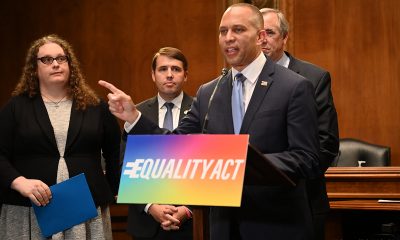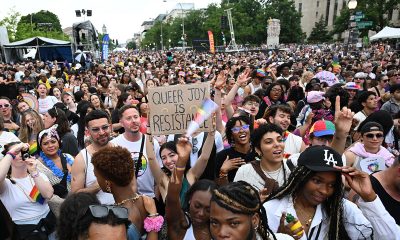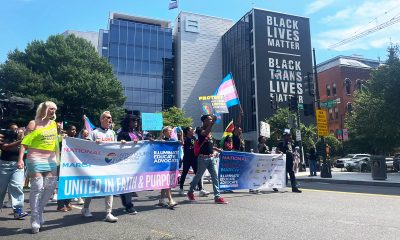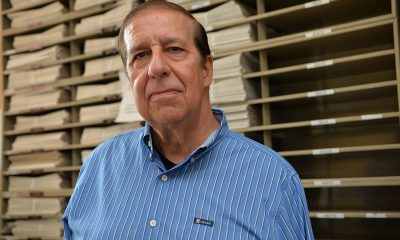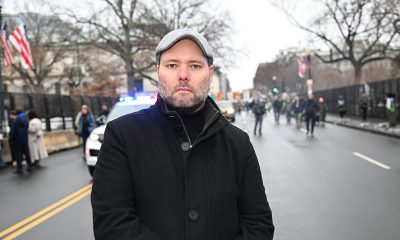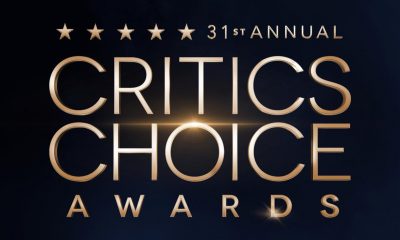Local
Anti-gay group targets Md., D.C.
Annapolis rally decries same-sex marriage

The National Organization for Marriage, the leading group opposing same-sex marriage in the U.S., has set its sights on Maryland and D.C., where it plans to pour in money and resources to overturn D.C.’s same-sex marriage law and prevent Maryland from passing one.
The group was scheduled to hold a rally Wednesday night in Annapolis at the state capital building to demand that lawmakers reject a gay marriage bill that has been introduced in the Maryland Legislature.
NOM has scheduled an Aug. 15 rally in D.C. calling for a ballot measure to overturn the city’s same-sex marriage law, but it has yet to announce the time or location for the event.
The Annapolis and D.C. rallies are part of the group’s “Summer for Marriage Tour 2010,” that includes a series of 20 rallies “encouraging supporters to stand up for marriage,” according to an announcement on the NOM website. Staff and volunteers for the group are traveling by bus to the rallies, which began in Maine on July 14.
“We’re excited to get on the road and meet people face-to-face, sharing with them the importance of marriage and how critical the future of marriage is to our country,” said Brian Brown, NOM’s executive director. “We need Americans to rally behind marriage as the union of one man and one woman and tell the courts and state legislatures that marriage matters.”
Bishop Harry Jackson, the Maryland minister who is leading the fight against D.C.’s same-sex marriage law, was scheduled to join Brown as one of the speakers at the Annapolis rally on Wednesday. Other speakers were to include members of the legislature from Baltimore and Prince George’s County who are expected to lead the fight against a Maryland gay marriage bill.
Morgan Meneses-Sheets, executive director of the statewide LGBT group Equality Maryland, said the group was to hold a series of its own events Wednesday night throughout the state. But she said the group was not planning a counter protest at the state capital in Annapolis.
“We are asking our people not to engage them,” she said of the NOM rally participants. “It’s not in our best interest for us to be there. It’s just a PR event for them.”
Instead, Meneses-Sheets said Equality Maryland had organized teams of volunteers to distribute postcards in Baltimore and several counties throughout the state, including Prince Georges and Montgomery Counties, in support of the state gay marriage bill. Those accepting the postcards were to be asked to mail them to their state representatives in a show of “growing support” for the marriage bill, she said.
Also scheduled for Wednesday night was a “Pride in Faith” meeting in Baltimore, where members of the clergy supportive of same-sex marriage would discuss ways to advance the same-sex marriage bill in the legislature.
The NOM 20-city tour was scheduled to end with the Washington, D.C. rally. Local D.C. groups have yet to announce plans on how they might respond to the D.C. rally.
The D.C. Court of Appeals ruled 5-4 last week against a lawsuit filed by Bishop Jacking seeking to force the city to hold a voter initiative calling for overturning the D.C. Marriage Equality Act, which legalized same-sex marriage in the District.
Virginia
Gay Va. State Sen. Ebbin resigns for role in Spanberger administration
Veteran lawmaker will step down in February
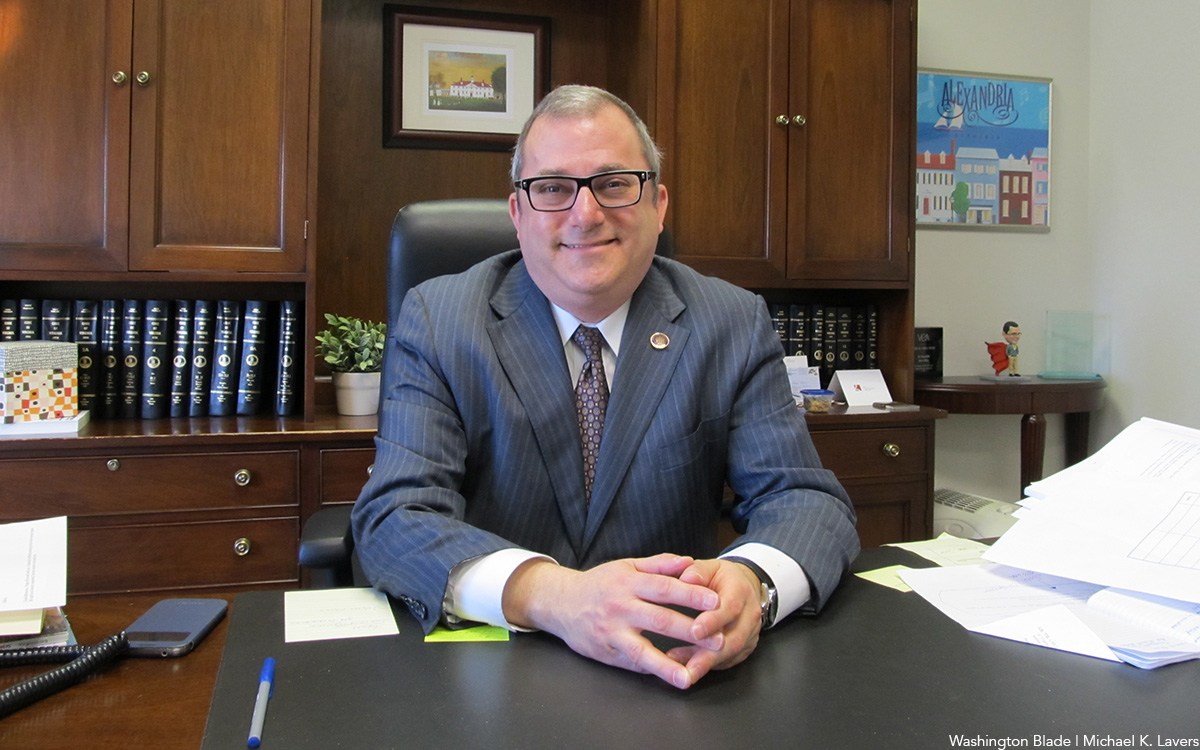
Alexandria Democrat Adam Ebbin, who has served as an openly gay member of the Virginia Legislature since 2004, announced on Jan. 7 that he is resigning from his seat in the State Senate to take a job in the administration of Gov.-Elect Abigail Spanberger.
Since 2012, Ebbin has been a member of the Virginia Senate for the 39th District representing parts of Alexandria, Arlington, and Fairfax counties. He served in the Virginia House of Delegates representing Alexandria from 2004 to 2012, becoming the state’s first out gay lawmaker.
His announcement says he submitted his resignation from his Senate position effective Feb. 18 to join the Spanberger administration as a senior adviser at the Virginia Cannabis Control Authority.
“I’m grateful to have the benefit of Senator Ebbin’s policy expertise continuing to serve the people of Virginia, and I look forward to working with him to prioritize public safety and public health,” Spanberger said in Ebbin’s announcement statement.
She was referring to the lead role Ebbin has played in the Virginia Legislature’s approval in 2020 of legislation decriminalizing marijuana and the subsequent approval in 2021of a bill legalizing recreational use and possession of marijuana for adults 21 years of age and older. But the Virginia Legislature has yet to pass legislation facilitating the retail sale of marijuana for recreational use and limits sales to purchases at licensed medical marijuana dispensaries.
“I share Governor-elect Spanberger’s goal that adults 21 and over who choose to use cannabis, and those who use it for medical treatment, have access to a well-tested, accurately labeled product, free from contamination,” Ebbin said in his statement. “2026 is the year we will move cannabis sales off the street corner and behind the age-verified counter,” he said.
Maryland
Steny Hoyer, the longest-serving House Democrat, to retire from Congress
Md. congressman served for years in party leadership
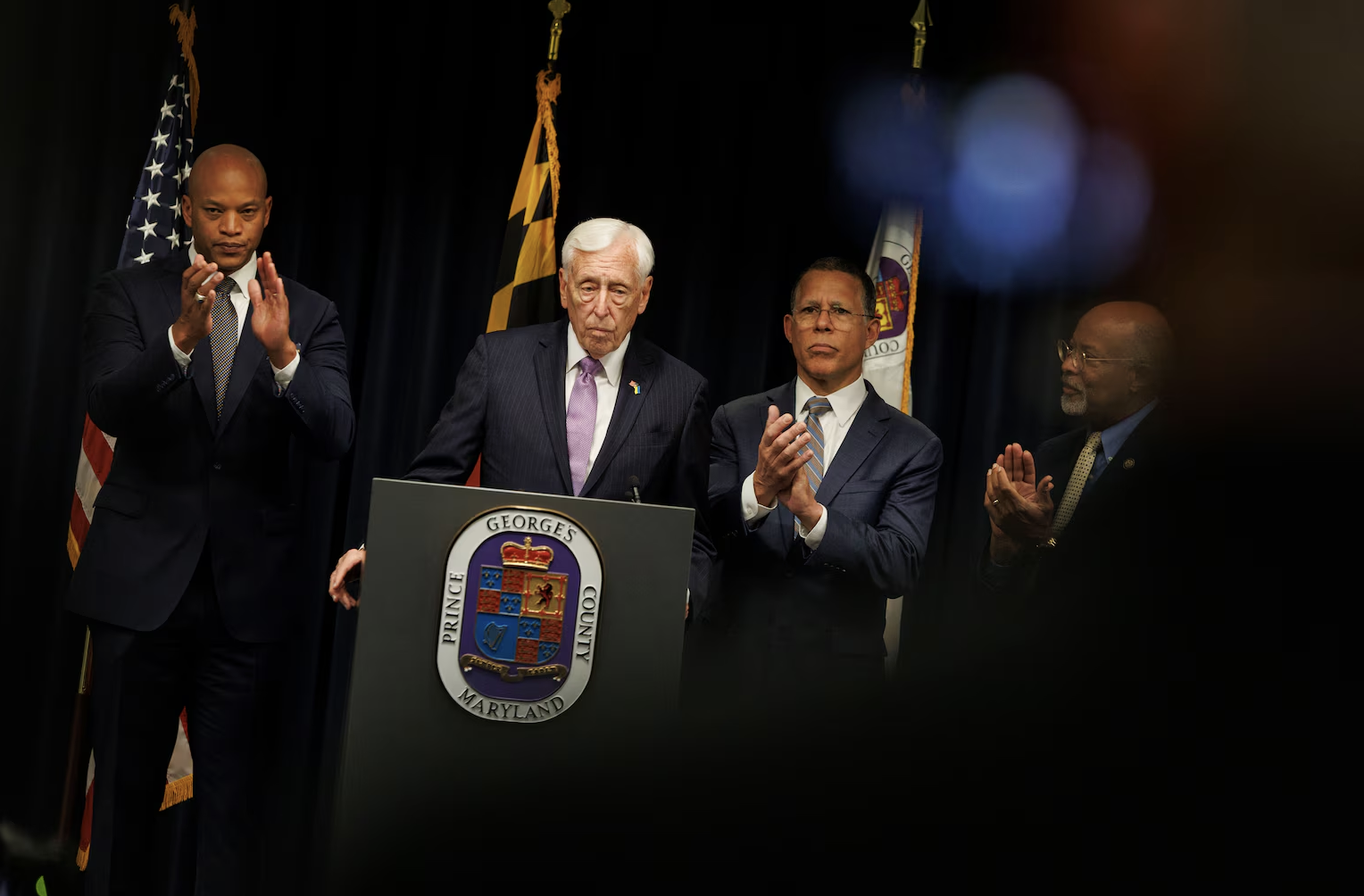
By ASSOCIATED PRESS and LISA MASCARO | Rep. Steny Hoyer of Maryland, the longest-serving Democrat in Congress and once a rival to become House speaker, will announce Thursday he is set to retire at the end of his term.
Hoyer, who served for years in party leadership and helped steer Democrats through some of their most significant legislative victories, is set to deliver a House floor speech about his decision, according to a person familiar with the situation and granted anonymity to discuss it.
“Tune in,” Hoyer said on social media. He confirmed his retirement plans in an interview with the Washington Post.
The rest of this article can be found on the Baltimore Banner’s website.
District of Columbia
Kennedy Center renaming triggers backlash
Artists who cancel shows threatened; calls for funding boycott grow

Efforts to rename the Kennedy Center to add President Trump’s name to the D.C. arts institution continue to spark backlash.
A new petition from Qommittee , a national network of drag artists and allies led by survivors of hate crimes, calls on Kennedy Center donors to suspend funding to the center until “artistic independence is restored, and to redirect support to banned or censored artists.”
“While Trump won’t back down, the donors who contribute nearly $100 million annually to the Kennedy Center can afford to take a stand,” the petition reads. “Money talks. When donors fund censorship, they don’t just harm one institution – they tell marginalized communities their stories don’t deserve to be told.”
The petition can be found here.
Meanwhile, a decision by several prominent musicians and jazz performers to cancel their shows at the recently renamed Trump-Kennedy Center in D.C. planned for Christmas Eve and New Year’s Eve has drawn the ire of the Center’s president, Richard Grenell.
Grenell, a gay supporter of President Donald Trump who served as U.S. ambassador to Germany during Trump’s first term as president, was named Kennedy Center president last year by its board of directors that had been appointed by Trump.
Last month the board voted to change the official name of the center from the John F. Kennedy Memorial Center For The Performing Arts to the Donald J. Trump And The John F. Kennedy Memorial Center For The Performing Arts. The revised name has been installed on the outside wall of the center’s building but is not official because any name change would require congressional action.
According to a report by the New York Times, Grenell informed jazz musician Chuck Redd, who cancelled a 2025 Christmas Eve concert that he has hosted at the Kennedy Center for nearly 20 years in response to the name change, that Grenell planned to arrange for the center to file a lawsuit against him for the cancellation.
“Your decision to withdraw at the last moment — explicitly in response to the Center’s recent renaming, which honors President Trump’s extraordinary efforts to save this national treasure — is classic intolerance and very costly to a non-profit arts institution,” the Times quoted Grenell as saying in a letter to Redd.
“This is your official notice that we will seek $1 million in damages from you for this political stunt,” the Times quoted Grenell’s letter as saying.
A spokesperson for the Trump-Kennedy Center did not immediately respond to an inquiry from the Washington Blade asking if the center still planned to file that lawsuit and whether it planned to file suits against some of the other musicians who recently cancelled their performances following the name change.
In a follow-up story published on Dec. 29, the New York Times reported that a prominent jazz ensemble and a New York dance company had canceled performances scheduled to take place on New Year’s Eve at the Kennedy Center.
The Times reported the jazz ensemble called The Cookers did not give a reason for the cancellation in a statement it released, but its drummer, Billy Hart, told the Times the center’s name change “evidently” played a role in the decision to cancel the performance.
Grenell released a statement on Dec. 29 calling these and other performers who cancelled their shows “far left political activists” who he said had been booked by the Kennedy Center’s previous leadership.
“Boycotting the arts to show you support the arts is a form of derangement syndrome,” the Times quoted him as saying in his statement.
-

 Sponsored4 days ago
Sponsored4 days agoSafer Ways to Pay for Online Performances and Queer Events
-

 District of Columbia3 days ago
District of Columbia3 days agoTwo pioneering gay journalists to speak at Thursday event
-

 Colombia3 days ago
Colombia3 days agoBlade travels to Colombia after U.S. forces seize Maduro in Venezuela
-

 a&e features3 days ago
a&e features3 days agoQueer highlights of the 2026 Critics Choice Awards: Aunt Gladys, that ‘Heated Rivalry’ shoutout and more

